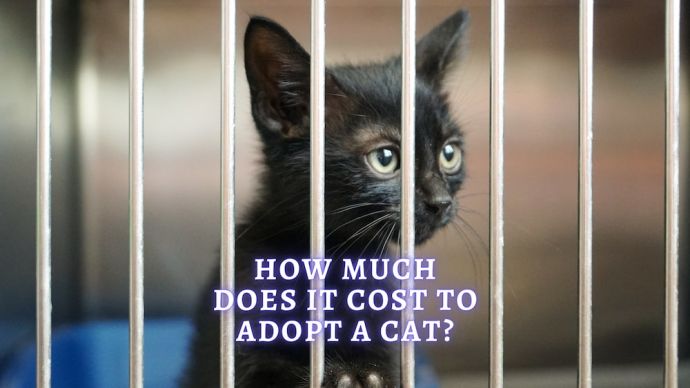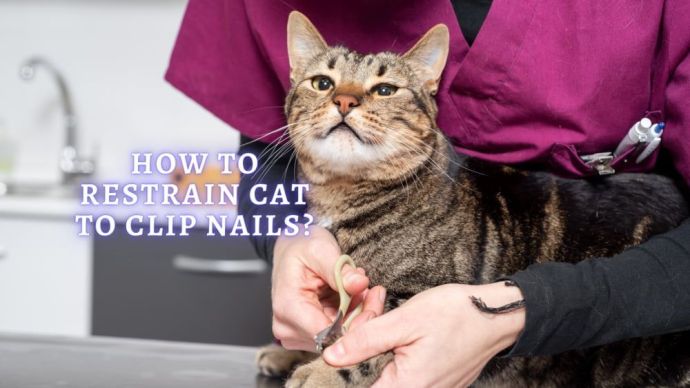Pyometra In Cats: Signs, Diagnosis, Treatment, and Prevention
Written by:
Author: Marissa Prizio
Marissa Prizio attended the University of New Hampshire and earned a bachelor's degree in biomedical Animal Science. Marissa has always enjoyed writing; she was even mixing literature classes into her science major in college. During her writing career, she has edited eBooks, written for a variety of websites, and created audio-visual courses for sustainability.
View all 36 articlesLearn about our editorial process and veterinary review board.
Viewed: 124
Updated on: 05/17/2023
Veterinary professionals often recommend spaying cats for a number of reasons. The most common arguments are population control and preventing reproductive tract-related cancers, but pyometra is another considerable concern for unspayed cats. Pyometra in cats is a life-threatening condition for unspayed or poorly spayed individuals. If you want to keep your female cat happy and healthy, then this is an important condition to know about.
RELATED: Can a Cat Get Pregnant after Being Spayed?
What is a pyometra, and why does it occur in cats?
To put it simply, it is a bacterial infection of the uterus. As with any infection, older cats are considered to be more susceptible, but the main group of individuals at risk are intact female cats. [1]
Intact female cats go through hormonal changes related to a process known as estrus. Many people may better know this stage as heat. This reproductive cycle has multiple stages, but the one related to pyometra in cats comes after a heat when the hormone progesterone remains heightened. This hormone signals for the body to thicken the uterine lining in preparation for pregnancy.
Cats that are kept indoors or are not intentionally bred may not get pregnant, but this does not prevent their body from repeating this process. Every time a cat goes through a heat cycle, their thickened uterine lining becomes even thicker. After a few cycles, cystic endometrial hyperplasia can occur. [1] [2]
These cysts within the uterus produce fluids that are perfect for supporting bacterial growth and since the cat’s cervix is open for a time during their heat cycle, bacteria from the vaginal canal can enter the uterus. [2] The result is an infected uterus which is often life-threatening.
So why doesn’t the body fight this infection and expel infected material? Two main factors keep cats’ bodies from healing themselves when pyometra occur. The first is an inability to excrete the infected material. This is because high progesterone levels prevent the muscles of the uterus from contracting to expel infected materials. [1] There are also cases where the cervix remains open during infection and closes after, making it impossible to expel the infection.
The second factor inhibiting a self-resolution of this infection is the prevention of white blood cells from entering the reproductive tract. When an infection occurs, the immune system normally targets that area, but the body prevents the immune system from entering the reproductive tract during heat because it would kill any sperm that enters. [1] As a result, when the condition is left without treatment, death commonly occurs as a result.
READ MORE: Signs That Your Cat is in Labor
What are the symptoms of pyometra?
The sooner you identify pyometra in your kitty, the better their chances are at survival and the less pain they have to deal with, so let’s look into some common signs.
If a cat has an infected uterus while their cervix is open, its condition may be referred to as an open pyometra. This opening allows the infected purulent material to come out as vaginal discharge. You may note this odd discharge in places where your cat was resting, but it can be hard to notice it on your pet as cats practice a lot of grooming. [1]
Cats with a closed pyometra tend to display an enlarged abdominal cavity due to a progressively enlarged uterus as the infection intensifies. Abdominal pain tends to come with the inflammation of the infected uterus. [2] In the early stages, other signs include fever, lethargy, loss of appetite, and increased drinking due to the bacteria’s impact on kidney function. [1]
Clinical signs can be even more severe in an advanced closed pyometra where the bacteria advance into the bloodstream resulting in anorexia with vomiting or diarrhea. Since your cat’s body can not heal this infection and can not drain, the pressure eventually causes the uterus to rupture and spill deadly bacteria into the body. [1] [2]
Diagnosing Pyometra
It is easy for some of the early signs to be overlooked, which is why a medical exam and diagnosis are very important for any ill unspayed female cats that present signs of a bacterial infection.
A veterinarian will normally start with a physical examination where they may find an enlarged uterus, vaginal discharge, and the depressed nature of a female cat with pyometra. If the cat is unspayed and has these signs coupled with a fever and urinary tract infection symptoms, pyometra becomes a serious suspect. [1] [2]
The next step is blood tests. A complete blood count may be performed, with the white blood cell count being a focus. Felines diagnosed with pyometra tend to have elevated white blood cells circulating despite their inability to reach the source of the infection.
X-rays are another useful diagnostic tool that is best for diagnosing a closed pyometra. This is because the enclosed mass of infected material is visible on a radiograph. Since an open pyometra constantly drains, it is normally less conclusive. [1]
In some cases, cats diagnosed with pyometra also receive vaginal cytology. This allows veterinarians to investigate the contents of vaginal discharge that they may suspect to be a pyometra. [2]
While this is most commonly diagnosed in intact female cats, spayed cats can also be diagnosed. This is an anomaly known as stump pyometra. In these cases, a previous spay procedure left some ovarian tissue behind, and that tissue has somehow been exposed to bacteria, causing an infection in what is left of the reproductive tract. [2]
How Is Pyometra In Cats Treated?
Pyometra in cats may be a scary and deadly condition, but the good news is there is a very effective option for treatment. Regardless of if the individual has a closed cervix or open cervix, a procedure known as an ovariohysterectomy is the preferred treatment.
This procedure includes surgically removing the uterus and thusly removing the infection. This surgery is also commonly called a spay, but the condition of the uterus makes pyometra surgery more complicated than a standard spay. This is veterinary surgeons primary method for prompt treatment since some studies suggest a 100% survival rate for cases that received timely treatment. [3]
An alternative method of treatment exists but is less common due to higher risk factors and more lengthy treatment. Feline’s pyometra can be expelled if the cervix is open by using prostaglandin treatment. This hormone causes the uterus to contract and hopefully expel the infection. [2] [3] It may take multiple treatments before all the infected material is expelled. In the meantime, IV fluids and pain medications may be needed to keep the patient comfortable and somewhat stable.
The prognosis for cats with pyometra
The prognosis for pyometra in cats is good as long as medical intervention happens before it has progressed to a state of uterine rupture or bacterial infection of the blood. When the preferred treatment, a spay, is performed, most cats are expected to make a full recovery. [3]
If the chosen medical treatment for an open pyometra is Prostaglandin therapy, the prognosis is less certain. This treatment reaps no clinical improvement for 48 hours in most cases, so it has a poor prognosis for conditions that are very advanced or closed. [1]
The worst prognosis is for untreated cats. Like any bacterial infection that the body can’t manage on its own, pyometra is life-threatening if left untreated.
How Do We Prevent Pyometra In Cats?
Pyometra in cats can be prevented with a routine spay. Spaying your cat when they are healthy keeps them from experiencing the heat cycles and subsequent thickened uterine lining that leads to a pyometra. While it can happen in spayed cats where ovarian tissue is left behind, it is far more rare than occurrences in unspayed cats.
Another major risk factor for pyometra is the administration of progesterone-based drugs. While progesterone isn’t the reason condition occurs, excess amounts can impact the heat cycle. [1] [2] In most cats, the best method to prevent pyometra is still considered spaying before they repeat their heat cycle.
I want to breed my cat in the future. Is there an alternative to surgery?
If a cat has an open pyometra, there is an alternative treatment that preserves the reproductive system. Prostaglandin therapy can be used to treat pyometra in cats when it is detected early enough. This treatment helps the uterus expel infected materials, and with the help of antibiotics and fluids, some cats recover. Up to 70% of female cats that recover from this treatment can still be fertile; however, they are at an increased risk for recurring pyometra due to hormonal changes. [2]
This treatment does not work on closed cervix pyometra as it can result in uterus ruptures. [1] If an open pyometra patient responds well to this treatment, it is recommended they be bred on their next heat cycle, and as soon as they are done having litters, they be spayed to minimize the risk of recurrence. [2]
FAQs
What are the symptoms of pyometra in cats?
Pyometra has many symptoms that fit a generic infection, and open cervix cases result in abnormal vaginal discharge.
What are the first signs of pyometra?
Early signs of pyometra include the typical fevers and lethargy associated with an infection. This condition occurs alongside symptoms that may also appear like a urinary infection at first glance.
How common is pyometra in cats?
Pyometra is more common in dogs than cats, and luckily there is a great way to prevent pyometra. Most cats that are spayed have a significantly reduced chance of developing pyometra.
What causes pyometra in cats?
A pyometra occurs when the reproductive tract of an intact female cat is susceptible to bacterial infection through an open cervix during their heat cycle.
Article Sources:
- Weir, Malcolm, and Ernest Ward. “Pyometra in Cats.” VCA Animal Hospitals, vcahospitals.com/know-your-pet/pyometra-in-cats.
- Memon, Mushtaq A. “Pyometra in Small Animals – Reproductive System.” Merck Veterinary Manual, 16 May 2023, merckvetmanual.com/reproductive-system/reproductive-diseases-of-the-female-small-animal/pyometra-in-small-animals.
- Pailler, Sharon, et al. “Findings and Prognostic Indicators of Outcomes for Queens with Pyometra Treated Surgically in a Nonspecialized Hospital Setting.” AVMA – Journal of the American Veterinary Medical Association, 1 June 2022, avmajournals.avma.org/view/journals/javma/260/S2/javma.20.12.0712.xml.
 Cat Care How to Get an Aggressive Cat Into a Carrier? 6 Methods to Get a Cat Into a Carrier
Cat Care How to Get an Aggressive Cat Into a Carrier? 6 Methods to Get a Cat Into a Carrier - 1602
- 0
 Cat Care How High Can Cats Jump? All You Wanted to Know About Cats Jumping Abilities
Cat Care How High Can Cats Jump? All You Wanted to Know About Cats Jumping Abilities - 353
- 0
 Cat Care How Much Does It Cost To Adopt A Cat? Costs to Consider When Adopting a Pet
Cat Care How Much Does It Cost To Adopt A Cat? Costs to Consider When Adopting a Pet - 74
- 0
 Cat Care Cat Vomit Looks Like Poop: What does your cat’s vomit say about their health?
Cat Care Cat Vomit Looks Like Poop: What does your cat’s vomit say about their health? - 3548
- 0
 Cat Care Why Does My Cat Attack My Legs? 10 Reasons Why and What To Do About It (Vet-Approved Advice)
Cat Care Why Does My Cat Attack My Legs? 10 Reasons Why and What To Do About It (Vet-Approved Advice) - 46013
- 21
 Cat Veterinary Tips Cat Stomach Gurgling: Vet Advice on Why is Your Cat Stomach Gurgling?
Cat Veterinary Tips Cat Stomach Gurgling: Vet Advice on Why is Your Cat Stomach Gurgling? - 36469
- 4
 Cat Veterinary Tips My Cat Lost its Voice: Can Cats get Laryngitis? (Vet Advice)
Cat Veterinary Tips My Cat Lost its Voice: Can Cats get Laryngitis? (Vet Advice) - 23554
- 13






















